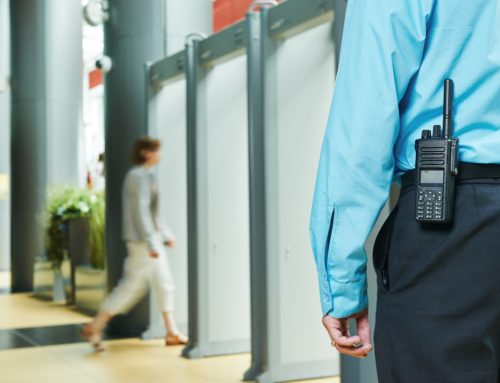Regardless of the type of work you do, workplace safety is a valid concern for everyone. Employers and employees spend a significant amount of their lives at their workplace and because of this, they want to know they are provided with adequate security and safety.
Unsafe work environments reduce productivity and profitability, so it’s in a company’s best interest to guarantee their employees’ health and safety are secured at all times. Read on to find out how your corporate security and management system works to ensure a safe environment.
What is a Corporate Security and Safety Management System?
Corporate security and safety management systems are assembled from specific procedures and policies made primarily for reducing accidents and illnesses affecting employees at their workplace. However, its long-term impact is seen in improving compliance, reducing costs, and engaging workers to increase their productivity.
Because the safety management system is unique, its successful adoption relies on the level of commitment from management and employees and an adequate distribution of resources to create and enforce the policies and procedures.
Main Components of a Corporate Security and Safety Management System
While there might be differences in their application, most corporate security and safety systems have four main elements.
1. Safety Management
In order to control safety risks, the corporate security safety management team should regularly perform a process called Safety Risk Management.
This starts with a system and task description and analysis, during which the activities and workplace conditions are described, along with procedures, process measures, and interfaces implemented in the workplace.
Next, all potentially hazardous conditions are identified, including human error-related issues such as time pressure, shift turnovers, and lack of system knowledge. Based on the previously identified hazards, a risk analysis is performed, followed by the risk assessment, to ensure improved decision-making.
Finally, risk mitigation begins, enabling the implementation of safety measures to ensure the safety of people, property, and their environment.

2. Safety Policy
To demonstrate their commitment to employee safety, companies should set safety goals as a policy and be involved in meeting them. Safety accountability and responsibilities are defined within the leadership and the rest of the management system.
A specific documentation system for safety is implemented, and the personnel responsible for safety and security reviews them regularly.
3. Safety Promotion
Safety and security within a company are promoted through a series of activities, such as adequate communication, sharing knowledge on a regular basis, and training personnel about new protocols whenever necessary.
The ultimate goal is for employers to understand how the safety management system works, develop an awareness of potential hazards, and learn from each other’s experiences.
4. Safety Assurance
Safety assurance monitors the risks that may occur during operational hours. Through a series of investigations, audits, and employee reporting systems, the effectiveness of security control measures is continually assessed.
Because safety risk controls often fail due to a lack of leadership, instruction, or resources, it’s crucial to regularly analyze them against set objectives. Typically, they’re also compared to existing norms to see if there are patterns from multiple data points and trends over time that point to the need for new measures.

Benefits of a Corporate Security and Safety Management System
Establishing an efficient security system that ensures the highest degree of safety and maintains safe operations within a company can be challenging, even for new and small businesses.
However, there are plenty of advantages to having an effective corporate security and safety management system. Below, you’ll see the most common ones.
1. Provides Data for Improvement
The data about security and safety measures, employee experiences, and potential hazards are collected in one centralized system. This allows continued monitoring of the security conditions and enables companies to continuously reevaluate their processes and make better decisions in the future.
In an effective system, all information is entered into an online shared database, available for future inquiries and references. The collected data also enables employers to improve resource allocation, which results in increased efficiencies and reduced costs for the company.
2. Streamlining Corporate Safety Management
For each corporation, there are specific measures that can ensure safety and security are up to the industry standard. By implementing these through digital templates, employers can identify potential hazards, assess safety risks, and enforce better control measures at their employees’ workplaces.
This improves overall safety within the company and reduces the risk of accidents and illnesses employees may be exposed to.
3. Strengthening Company Culture
By implementing adequate safety measures and standing behind them, the company demonstrates corporate due diligence. This leads to improvements in the employee reporting system, where the staff becomes more communicative about potential safety issues.
This improves the safety culture as the employers feel safe working together and individually. A good company culture fosters collaboration between all levels. There are often specific lines of communication for different teams and organizational levels where everyone can be informed and reassured of safety priorities.
4. Compliance with the Law
With the appropriate corporate safety and security system in place, companies don’t have to worry about being in compliance with laws and regulations. When developing a clear roadmap to maintain safety according to industry standards, employers also gain awareness of all legal requirements.
This lowers the chances of commenting on an offence or acquiring unnecessary fees and penalties. Ensuring employee safety also allows companies to prevent potential lawsuits that may result in employers getting injured or ill at their workplace.
5. Further Improving the Bottom Line
Apart from avoiding unnecessary expenses and improving productivity, an adequate safety system has other ways to improve the corporate bottom line. By making workplaces safer and more secure, the system helps reduce insurance premiums, which convey a sizable chunk of employee-related expenses.
Because it helps maintain a good reputation for the company culture, the security system also allows the company to be more competitive in the market. This results in improved consumer engagement and trust, which, in turn, translates to increased income.

Final Thoughts
A corporate security and safety management system is a complex organization involving a series of procedures and policies designed to reduce the number of accidents and other occurrences in a workplace.
Its main elements include safety risk management, safety policy, safety promotion, and safety assurance. Implementing these allows the companies to gather data to make more informed decisions regarding safety and improve resource allocation, resulting in increased efficiencies and reduced costs.
The system also demonstrates due diligence on the company’s part and helps build company culture.






